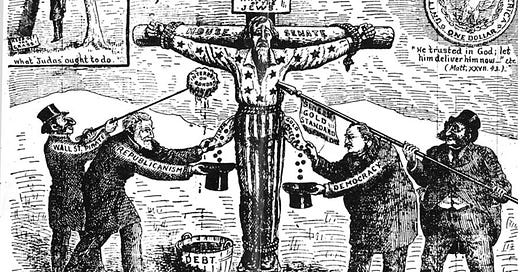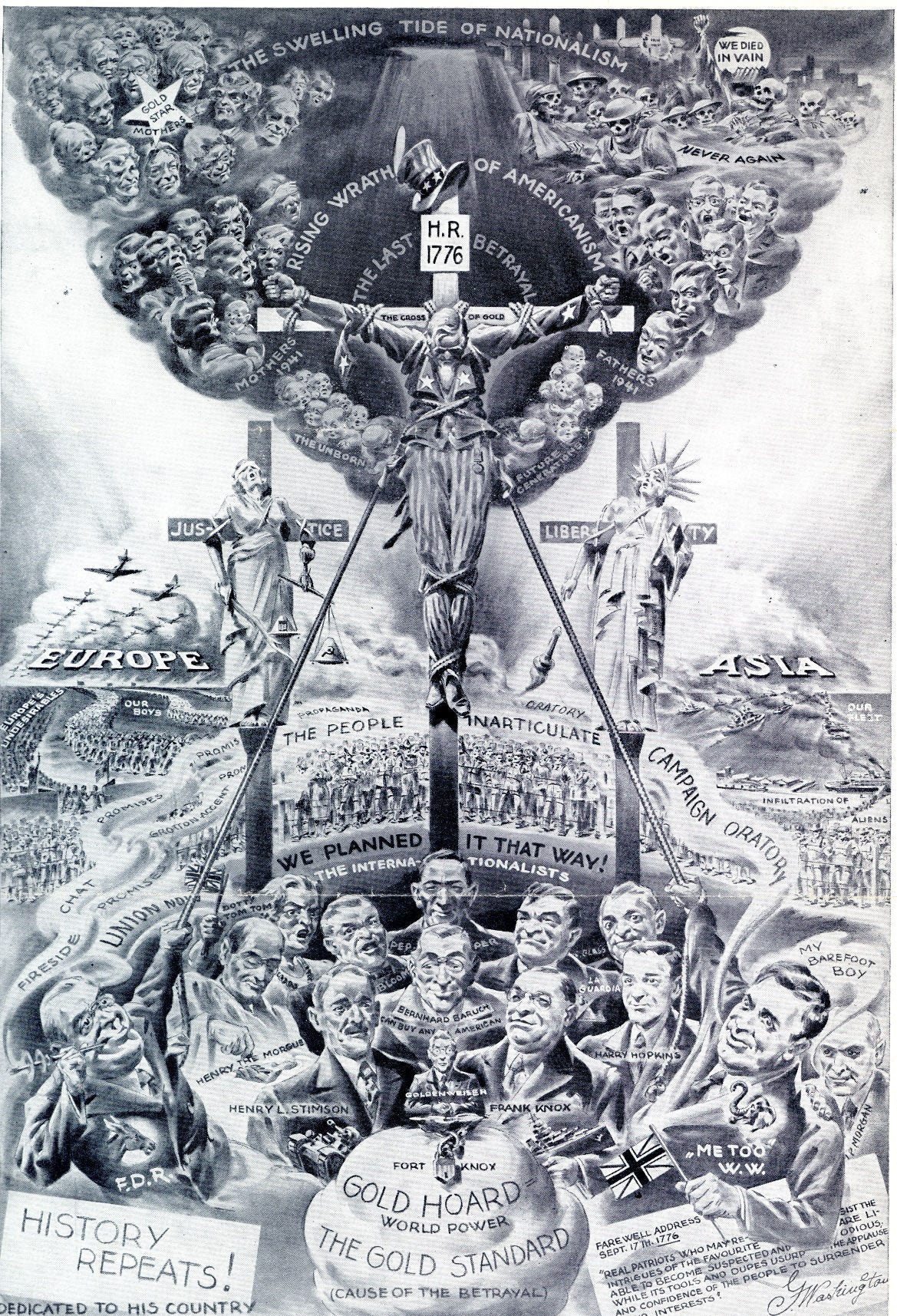In our previous post about the political cartoons of Watson Heston, we saw a depiction of the crucifixion of Uncle Sam, 1896. The source file I used was from the front page of a Helena, MT newspaper and did not include the message on the sign above his head that is more popularly attributed to it. “This is US in the hands of the Jews.” It also features a variant caption underneath, “History Repeats Itself.”
I would like to see this version in the context of its first publication, which is cited as “Sound Money” for 15 April, 1896… same date as the appearance in the Helena paper from my previous post. The variance is peculiar. The publication for the first time in alternate versions of the same date, one in Ohio, one in Montana, just seems a bit odd to me. Maybe it’s not. Maybe different papers supplied in advance with art from an independent news syndicate, as it can be demonstrated Heston’s illustrations were, had the right to create their own titles and alter the images as the local editor saw fit.
How did the visual “wire” between newspapers even operate in 1896? I’m out of my depth.
But that’s okay, because I was trying to get us up to 1941 anyway.
In April of 1941 a “new pro-Nazi circular” came to the attention of a Philadelphia jewish group. Their detective network went to work on discovering who was responsible for it.
What was it about this poster that warranted so much attention? As with the case of Elmer Hartzel, I wondered about the value, the return on investment, in going after this work.
The art was good, professional even. The details rich and worth examining.
One of the sleuths focused on a Chicago return address reportedly associated with a shipment of the posters to Pennsylvania. He zeroed in on a print shop associated with the German-American Bund. A letter states that the FBI had examined the firm’s records with the permission of a partner who was less enthusiastic about nationalism.
April, 1941, eight months before the US officially joined the war. Already we see the FBI collaborating with ethnic and religious fraternities in surveilling private citizens.
I was reading memos a few months back regarding the FBI’s reluctance to encourage private detective work on the part of such groups just a few years earlier. Hoover didn’t trust them in 1938 and recognized that their work was highly partisan.
By 1941 I’m starting to get the feeling that it was an unspoken certainty that we would be in the war very shortly and that the authorities might as well consider any pro-German elements a threat to national security and beef up those dossiers, welcoming the work of Soviet sympathizers and racial cliques.
That’s what we see by the Spring of ‘41 anyway.
Here is a short essay on the investigation of the “Crucifixion of Uncle Sam” which also documents the appearance of its sequel “Answer to the Betrayal.”
I intend to leave it for you to follow the link and do the necessary reading to put my next post in proper context.







